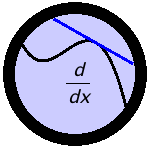As detailed on the syllabus, your assessment grade in this course will be determined by your proficiency on a variety of standards. (This is known as Standards Based Grading.)
Here is the list of standards that form the basis for this class, along with guiding questions that address each standard. You will be assessed on these standards throughout the semester.
What is different from the high-stakes "tests" that you might associate with a math class, there is an opportunity for you to re-assess your knowledge if you did not master the knowledge the first time around.
Mathematical Maturity
Standard M1. Mathematical Collaboration. (core) Have you met with classmates and completed the writing prompts that are assigned at regular intervals in the class?
Standard M2. Definitions. (core) Do you understand what a definition is? Are you able to write an explicit definition statement? Are you able to explain what the definition means in your own words? Are you able to give examples and non-examples of the definition?
Standard M3. Theorems. Do you understand what a hypothesis of a theorem is? Do you understand what a conclusion of a theorem is? For the Squeeze Theorem and the Intermediate Value Theorem: Are you able to determine the hypotheses and conclusions of a given theorem? Are you able to explain what the theorem means in your own words? Are you able to understand the consequences and non-consequences of a theorem?
Standard M4. Mean Value Theorem. Do you understand Rolle's Theorem and the Mean Value Theorem? Are you able to determine the hypotheses and conclusions of these theorems? Are you able to explain what the theorem means in your own words? Are you able to understand the consequences and non-consequences of the theorem? Can you apply the MVT?
Limits
Standard L1. Limit Basics. Do you understand the concept of a limit of a function? A one-sided limit? Are you able to approximate a limit from a given graph of a function? From a table of values that you compute?
Standard L2. Computing Limits. (core) Can you evaluate the limit of an expression at a point, using appropriate justification and notation?
Standard L3. Continuity. (core) Do you know the definition of when a function is continuous and understand it conceptually? Can you prove that a function is discontinuous at a point by using limits? Can you prove that a function is continuous by appealing to its properties or its construction?
Standard L4. Limits Involving Infinity. Can you compute the limit of a function at infinity? Can you determine when a limit is infinite? Can you use these techniques to determine the vertical and horizontal asymptotes of a function's graph?
Standard L5. Limit Definition of a Derivative. Can you write down the formula for the derivative as a limit of difference quotients in both ways? Do you understand where these formulas come from? Can you compute the derivative of a function using the limit definition when the function is a polynomial, root, or rational function?
Derivatives
Standard D1. Differentiability. Can you determine the tangent line to a curve using derivatives? Can you draw the graph of the derivative of a function given the graph of the function? Can you determine where a function is differentiable? Do you understand the consequences of Theorem 2.2.4?
Standard D2. Basic Derivatives. (core) Can you compute derivatives of polynomial and power functions, sine and cosine functions, and sums and differences of these?
Standard D3. Product and Quotient Rules. (core) Can you compute derivatives using the product and quotient rules?
Standard D4. Chain Rule. (core) Can you compute derivatives using the chain rule?
Standard D5. Implicit Differentiation. Can you solve problems that involve the use of implicit differentiation?
Applications
Standard A1. Related Rates. Can you use derivatives to solve problems that involve related rates of change?
Standard A2. Linear Approximations. Can you determine the linearization of a function and use it to approximate a desired function value?
Standard A3. Maxima and Minima. (core) Do you understand the concepts of critical numbers and local and global maxima and minima? Do you understand when global extrema must exist? Can you find global extrema?
Standard A4. First and Second Derivatives. (core) Can you interpret the first and second derivatives of a function graphically and descriptively? Can you use them to find local extrema?
Standard A5. Graph Sketching. Can you use derivatives and other information to make informed sketches graphs of functions?
Standard A6. Optimization. Can you use derivatives to solve optimization problems?
